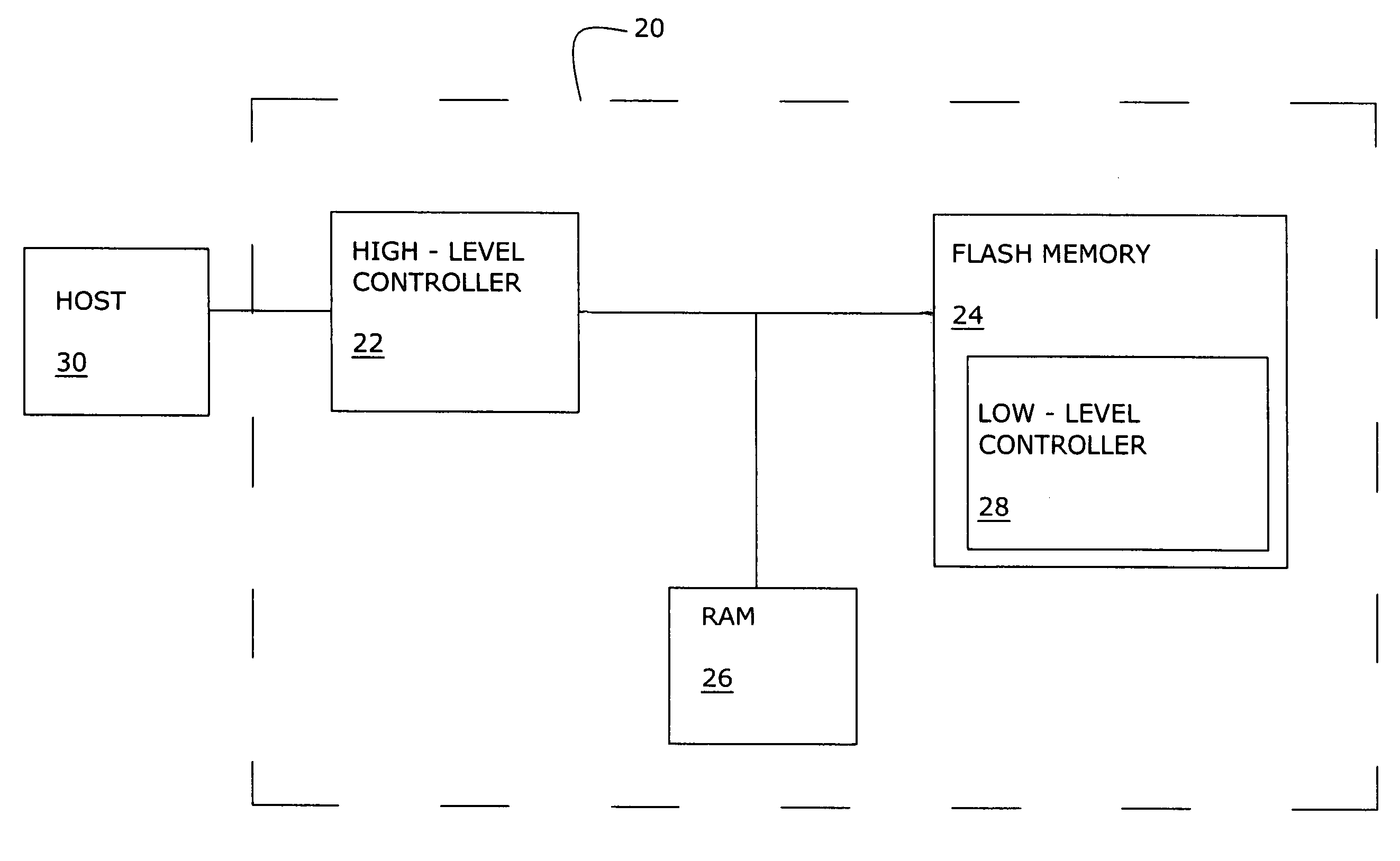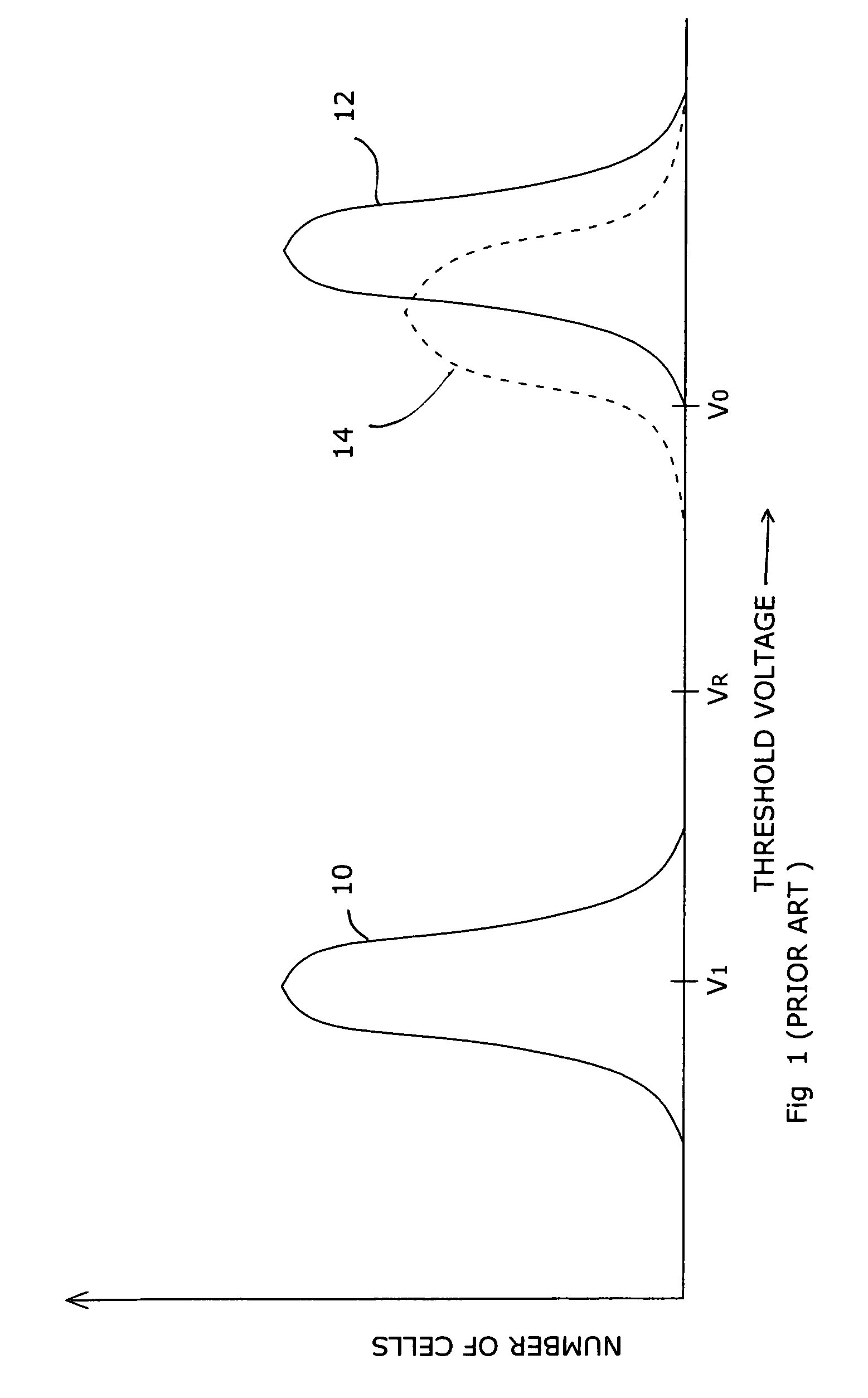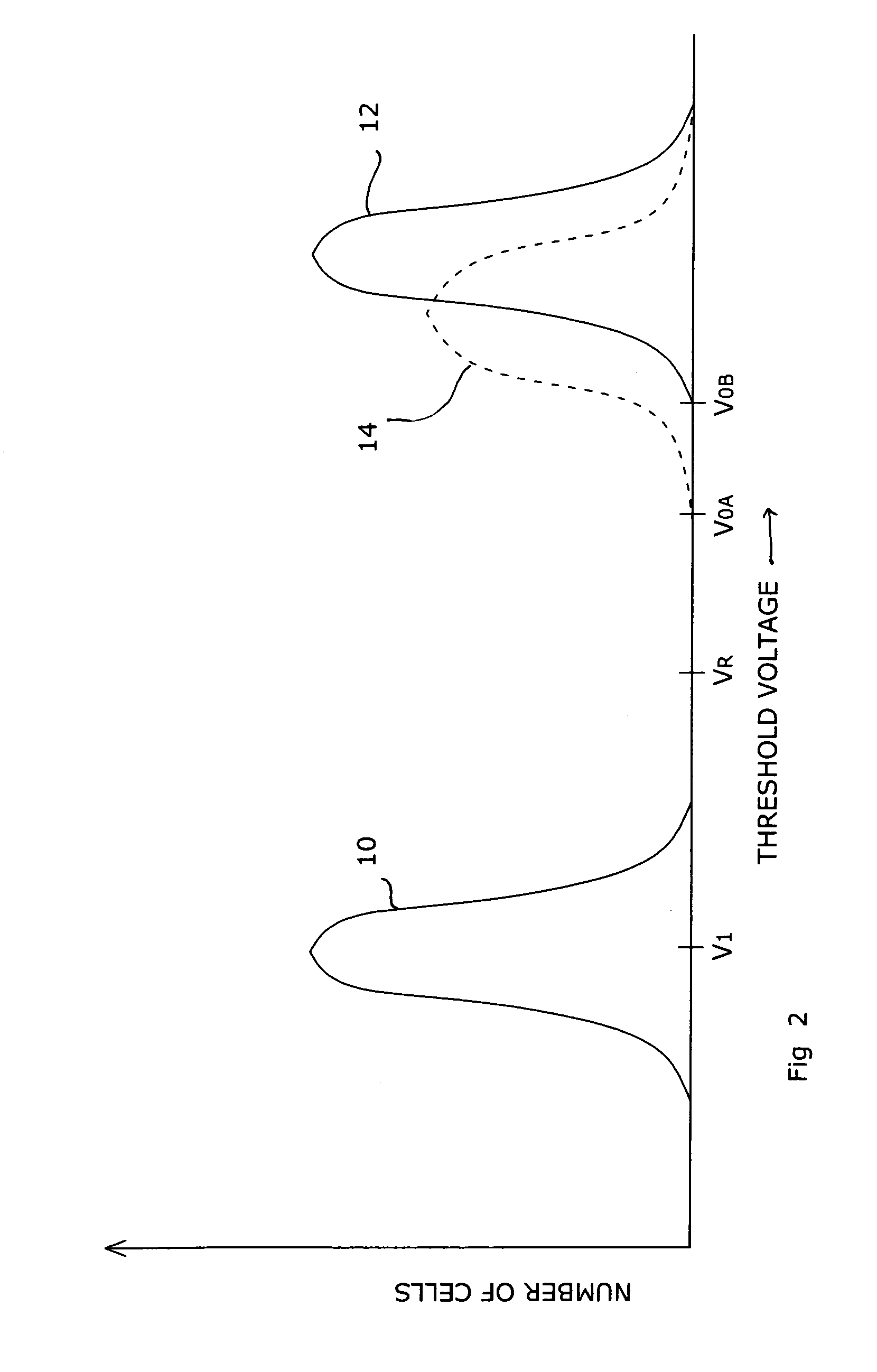Two-phase programming of a flash memory
a flash memory and two-phase technology, applied in the field of flash memory, can solve the problems of reducing the useful life of the cell, imposing stress on the cell, and relatively slow process of programming an array of flash cells
- Summary
- Abstract
- Description
- Claims
- Application Information
AI Technical Summary
Problems solved by technology
Method used
Image
Examples
Embodiment Construction
[0031]The present invention is of a method of programming a memory such as a flash memory, at an effective speed greater than that of prior art methods, with no loss in reliability.
[0032]The principles and operation of memory programming according to the present invention may be better understood with reference to the drawings and the accompanying description.
[0033]The present invention takes advantage of the fact that a host of a memory device such as a flash memory device typically exchanges data with the memory device only intermittently. For example, in the case of a digital camera with a detachable flash memory device, the user of the camera rarely if ever takes pictures at such a fast rate that the camera is continuously engaged in writing acquired digital images to the flash memory device. Nevertheless, a photographer sometimes desires to take a small number of pictures in quick succession, with the delay between successive pictures being as short as possible. This mandates t...
PUM
 Login to View More
Login to View More Abstract
Description
Claims
Application Information
 Login to View More
Login to View More - R&D
- Intellectual Property
- Life Sciences
- Materials
- Tech Scout
- Unparalleled Data Quality
- Higher Quality Content
- 60% Fewer Hallucinations
Browse by: Latest US Patents, China's latest patents, Technical Efficacy Thesaurus, Application Domain, Technology Topic, Popular Technical Reports.
© 2025 PatSnap. All rights reserved.Legal|Privacy policy|Modern Slavery Act Transparency Statement|Sitemap|About US| Contact US: help@patsnap.com



